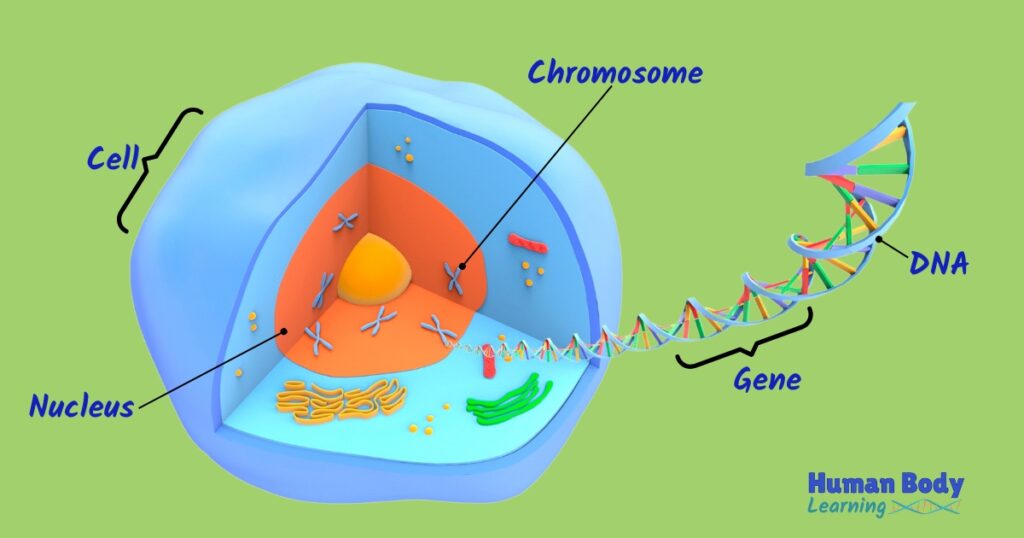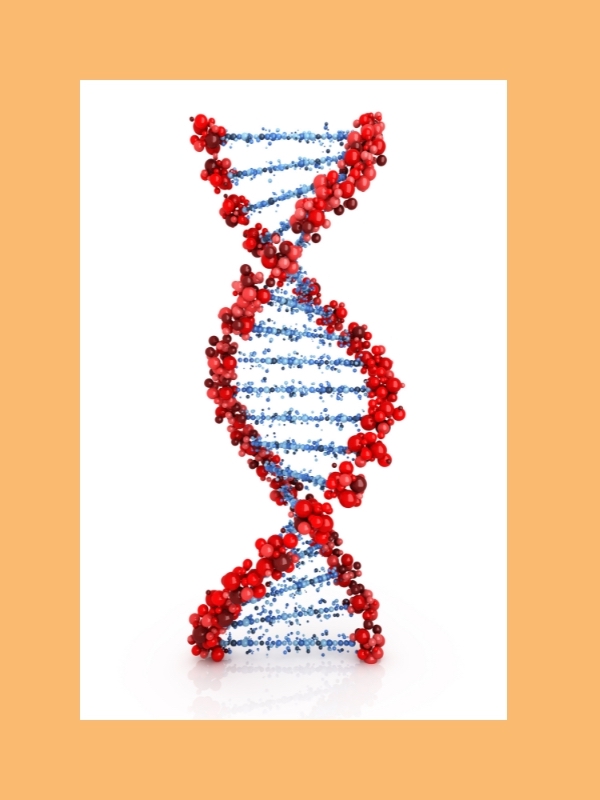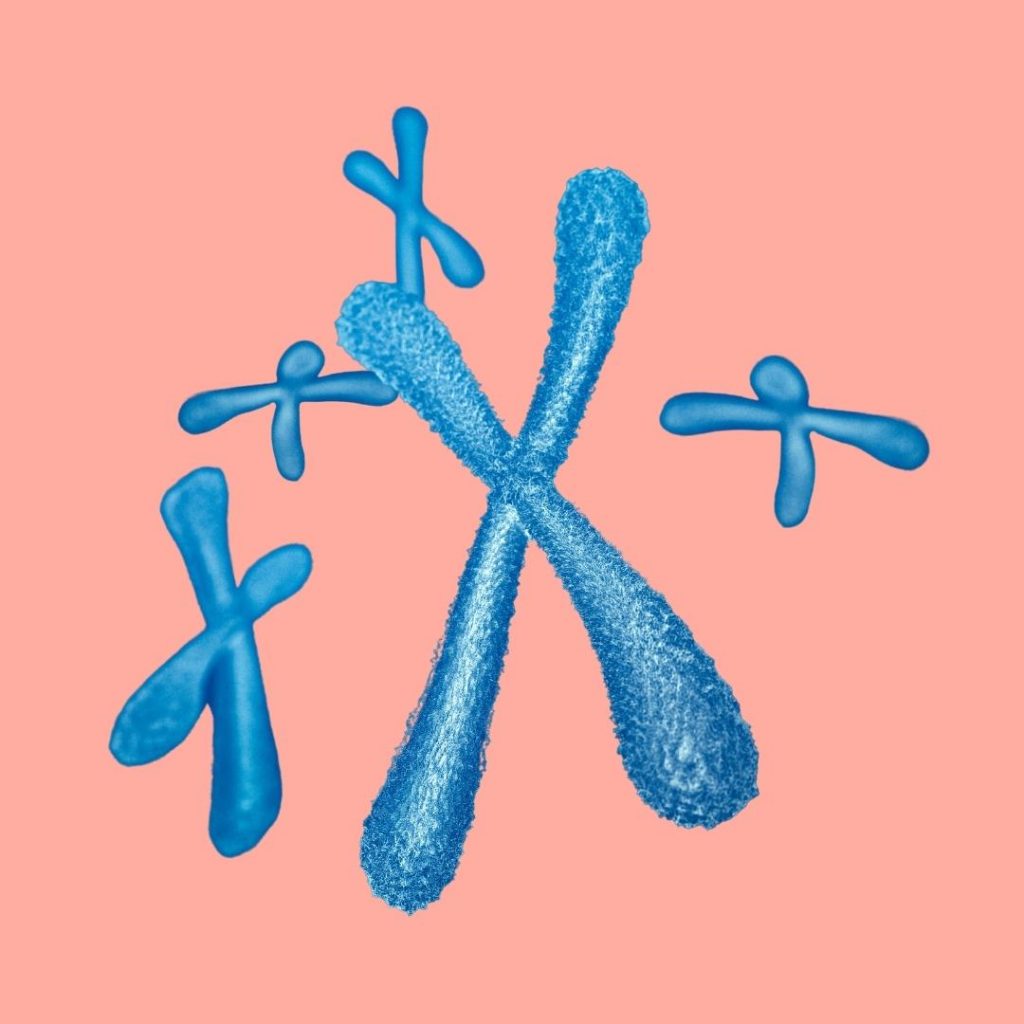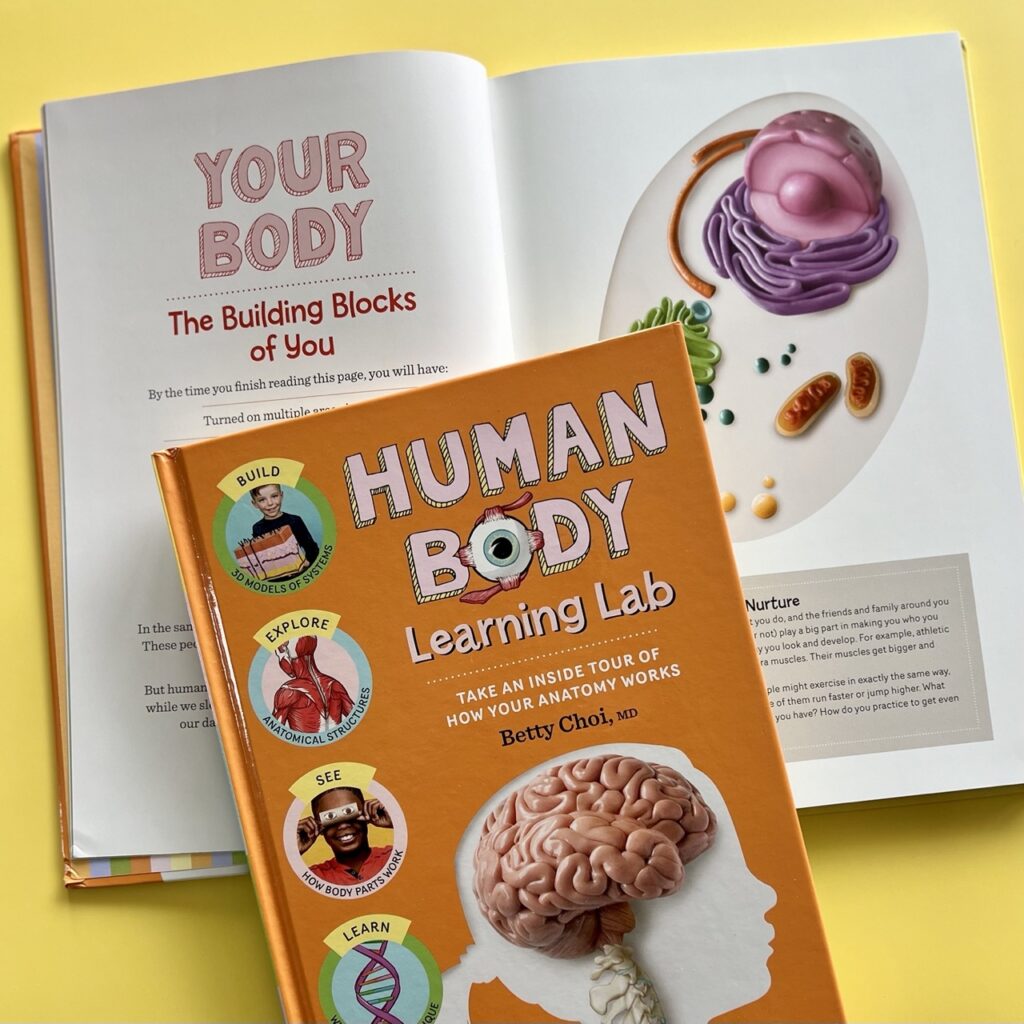What’s the Difference Between DNA, Genes, and Chromosomes?

Have you ever wondered where you got your good looks from? DNA, genes, and chromosomes are all important parts of the human body. They help make us who we are and give us certain features. Let’s break down each of these science words with simple definitions.
What is genetics?
In simple words, genetics is the study of genes. It’s a type of science that focuses on how certain features – like how you look or act – are passed down from ancestors and parents to children.
In a way, genetics is like a puzzle. Scientists who study genetics are called geneticists. Their job is to figure out the puzzle and discover fascinating secrets in human DNA and genes.
What is DNA?
DNA is a nickname for deoxyribonucleic acid. It’s a special molecule that contains all the information that makes you special.
Think of DNA as pages of an interesting book. And that book is all about YOU!

If you could see DNA up close with a special microscope, it would look like a twisted ladder. Scientists call this shape a “double helix.”
DNA is made up of building blocks called nucleotides. The four nucleotides have fancy names called:
- Adenine
- Thymine
- Guanine
- Cytosine
Adenine is always linked with thymine, while guanine is always linked with cytosine. These nucleotides make up the “stairs” in the twisted DNA ladder.
What are genes?
Genes are small sections of DNA – kind of like chapters in a book.
Genes are important because they contain instructions that tell your body how to look, grow, and function.
For example, genes tell your cells how to make certain proteins. As a result, the proteins help your body work, like digesting food and building muscles.
Genes also determine some of your traits, such as eye color, hair texture, and skin tone.
What are chromosomes?
A chromosome is like a book with many pages of DNA information. They are located in the nucleus of your cells. Up close, chromosomes look like tiny pieces of string.

Most people have 46 chromosomes, and they come in pairs. You get 23 chromosomes from your birth mother and 23 chromosomes from your birth father.
This is why you might have your father’s nose and your mother’s toes.
Key differences between DNA, genes, and chromosomes
In summary, DNA, genes, and chromosomes are parts of the human cells. They are related to each other with a few key differences.
- DNA is like pages of information in a recipe book.
- Genes are like chapters of a recipe book filled with instructions.
- Chromosomes are like recipe books that contain genes and DNA. And the recipe books are all about how to make YOU!
Learn more about the difference between DNA, genes, and chromosomes

Want to learn more fun facts about your DNA, genes, and chromosomes? Human Body Learning Lab is the best anatomy book for kids.
Check out the “Building Blocks of You” chapter to learn more about cell biology and genetics.
Explore hands-on projects like making cells and DNA models with recycled materials, learn fun facts about blood vessels and other body parts, and do simple experiments like testing your skin’s sensitivity.
Published on February 14, 2022. Updated on January 18, 2024 by Betty Choi, MD
Published on February 14, 2022. Updated on January 18, 2024 by Betty Choi, MD

Betty Choi, MD
Dr. Betty Choi is a Harvard-trained pediatrician who makes learning fun and doable. She created the kids’ anatomy book Human Body Learning Lab, which Science Magazine recommended as a “notable standout in the genre.”
